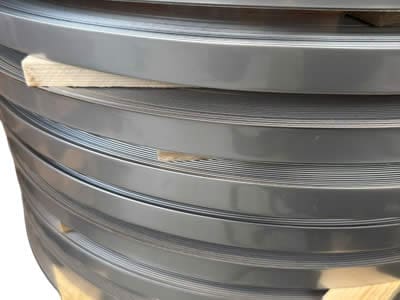Stainless Steel 304 (1.4301 / A2)


Stainless Steel 304 (1.4301 / A2)
Call 0121 544 5808 Today
Bespoke Manufacturing
Instant Quote Service
Worldwide Delivery
Various Gauges/Thicknesses
Bespoke Manufacturing
Instant Quote Service
Worldwide Delivery
Various Gauges/Thicknesses
What Is Stainless Steel 304 (1.4301 / A2)?
Stainless Steel 304 – also known as EN 1.4301 or A2 – is a non-magnetic, austenitic stainless steel alloy that contains approximately 18% chromium and 8% nickel.
These alloying elements give 304 its signature characteristics:
- High corrosion resistance in normal atmospheric and freshwater conditions.
- Excellent formability and weldability, ideal for sheet metal fabrication.
- Attractive appearance, available in brushed, polished, or mirror finishes.
Designations
| Name | Standard | Description |
|---|---|---|
| Stainless Steel 304 | AISI (USA) | Most common austenitic grade |
| 1.4301 | EN (Europe) | Equivalent to 304 |
| A2 | ISO/DIN | Fastener-grade stainless steel, suitable for general outdoor use |
Benefits of Stainless Steel 304
| Benefit | Description |
|---|---|
| Excellent Corrosion Resistance | Performs well in air, freshwater, and mild chemical exposure (not for marine environments). |
| Non-Magnetic (Annealed) | Ideal for sensitive environments; may become slightly magnetic after cold work. |
| Superior Formability | Easy to bend, roll, and deep draw. Perfect for sinks, tanks, and formed parts. |
| Good Weldability | Welds easily with standard TIG/MIG processes; no post-weld heat treatment needed. |
| Hygienic & Easy to Clean | Non-porous surface resists bacterial growth – essential for food and pharma. |
| Cost-Effective & Readily Available | More affordable than 316 (A4) with global availability. |
| Sustainable Material | 100% recyclable with high recycled content. |
Applications of Stainless Steel 304
Stainless steel 304’s balance of performance and cost makes it ideal for almost every industry:
- Cladding, facades, handrails, drainage, roofing, and structural trim.
- Sinks, worktops, storage tanks, and brewing or dairy equipment – easy to sterilise and hygienic.
- Heat exchangers, tanks, and process vessels resistant to sterilising agents.
- Plumbing fixtures, piping, and water treatment systems.
- Bolts, screws, washers, brackets, and hinges for indoor and outdoor (non-marine) applications.
- Exhaust systems, trims, and fuel lines.
- Surgical trays, benches, and sterilisation equipment.
Manufacturing & Material Use by Industry
| Industry | Common Materials | Application Example |
|---|---|---|
| General Manufacturing | Mild steel, 304, aluminium | Frames, brackets, enclosures |
| Chemical & Petrochemical | 304, 316, Inconel, PTFE | Tanks, vessels, seals |
| Food & Beverage | 304 / 316 | Hygiene-critical surfaces |
| Medical & Pharma | 316L, titanium | Instruments, cleanroom parts |
| Automotive | HSLA steel, aluminium | Body panels, exhausts |
| Aerospace | Titanium, Inconel | BEngine components, airframes |
Common Pain Points (and How Stephens Gaskets Solves Them)
| Pain Point | Solution |
|---|---|
| Not marine-grade (chloride corrosion) | We offer 316 (A4) stainless for saltwater environments. |
| Limited high-temp resistance | For >870°C, we recommend 310 or 321 stainless. |
| Slight magnetism after forming | We use controlled processes to minimise residual magnetism. |
| Prone to surface staining (“tea staining”) | Optional passivation and polishing maintain a bright finish. |
| Higher cost than carbon steel | Superior lifespan and zero-rust performance justify investment. |
| Stress corrosion cracking risk | We advise material pairing and stress-relief procedures. |
| Not heat-treat hardenable | Cold working or material substitution for higher hardness. |
